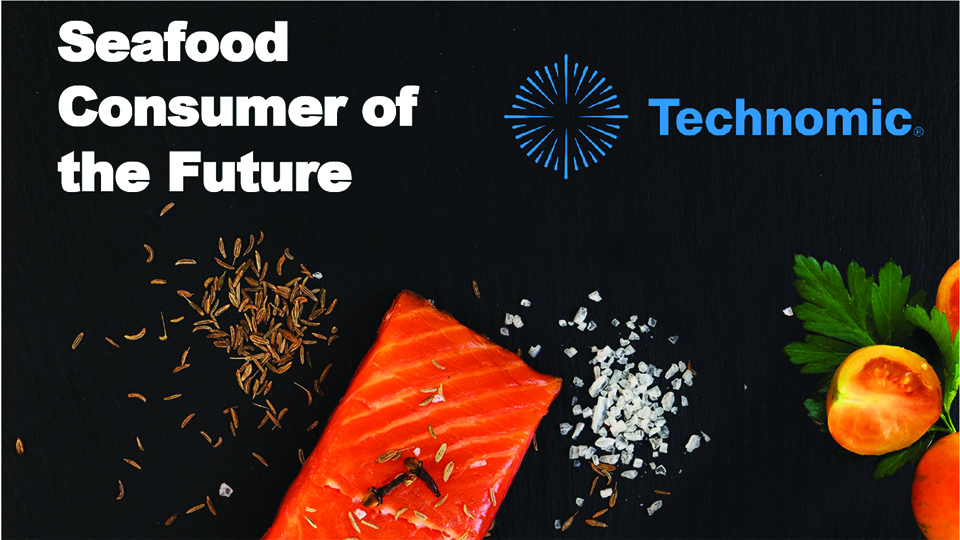Consumer purchasing decisions are ever-evolving. Influenced by cultural, economic and digital shifts, millions of consumers are now one click away from the path to purchase. Gone are the days when seafood was just purchased from the grocery store or ordered in a restaurant. Gone too are the days of targeting audiences simply by standard demographics, such as age, gender and income. To maintain a competitive edge, it’s imperative to keep our eyes on the horizon and evolve the Alaska Seafood brand in step with the changing seafood consumer.
In 2017, the Alaska Seafood Marketing Institute partnered with Technomic Research to help identify current trends in seafood consumption and how best to position Alaska seafood in a rapidly changing marketplace. Advances in technology, a generational shift, and changes in consumer preferences will drive not only the demand for Alaska seafood, but will also change how we reach consumers.

Digital buying options will continue to grow, leading marketers to shift from demographics to shared beliefs, behaviors, attitudes or values.
The report, “Seafood Consumer of the Future,” predicts that future consumers will be digitally native (meaning they were born and raised in the digital era), social media users, highly educated, health-conscious, sustainability minded, source their meals from a variety of places, and live in both urban and suburban settings. Other key research findings focused on who is shopping, how they are shopping and what they are shopping for.
By 2025, the workforce will look radically different than it does today. With Boomers continuing to retire, more Millennials will be married with children, more Generation X’ers and older Millennials will be empty nesters, and a larger percentage of Generation Z will be in the workforce. This shift in workforce and purchasing power will affect their food spend behavior. The gender differential on who does the primary grocery shopping will continue to decrease as traditional family and workplace roles converge.
Traditional grocery store shopping has and will continue to shift to other options, such as online grocery shopping, meal delivery services, and digital delivery services. Grocery shopping is becoming increasingly channel-agnostic, meaning customers have less of a preference for a single store and source from a variety of places.
This shifting landscape means that, as marketers, we too must shift our focus away from traditional demographics and into emerging psychographics, or targeting consumers based on a shared set of beliefs, behaviors, attitudes or values.
The emergence of digital shopping options, paired with brick and mortar stores, reflects a big shift in shopping habits. Amazon’s recent purchase of Whole Foods reflects this trend by further blurring the line between the online, mobile and in-store shopping experience. Nearly a quarter of consumers have already reported using a digital service to purchase groceries.
The constant rise in the number of internet-enabled devices makes online shopping even more accessible. The average American currently owns four of these devices — that includes computers, smartphones, tablets, smart speakers, smart cars, and a variety of internet-connected equipment for the home, kitchen or office.
More Americans are incorporating healthier eating habits into their diet, which includes seafood. Consumers report eating 30 percent more seafood in 2017, primarily citing health benefits as their reasoning. Younger consumers report selecting seafood over other proteins like poultry, beef and pork, also for health reasons.
Consumers also indicate increased seafood consumption due to preference, better availability, and more affordable options at retail and foodservice. Concerns about the environmental impacts of other meat production is also a contributing factor.
Overall, 64 percent of consumers report an increased interest in how food is produced, sourced or raised. Also playing a part in seafood purchasing decisions is a desire to know the origin of seafood, potential for environmental impacts, and sustainable methods of production.
This research confirms our belief that Alaska seafood is well positioned to capitalize on these market trends to strengthen the value of the brand in the eyes of the consumer.
ASMI is committed to a proactive marketing approach. Keeping our eyes on the horizon by investing in research gives us the ability to anticipate trends, plan around market shifts, and execute marketing programs to deliver the highest brand value for Alaska seafood customers today and in the future.







